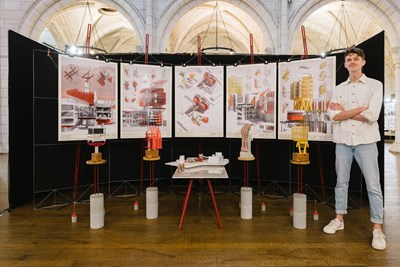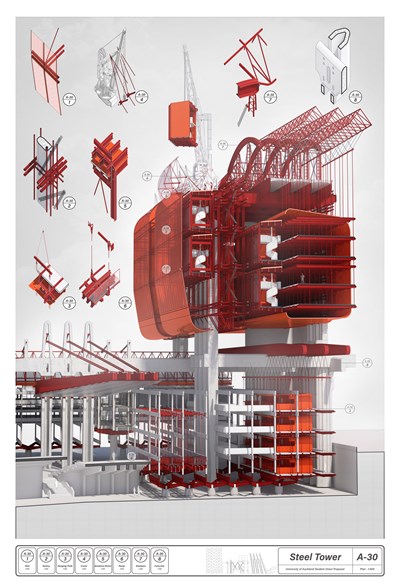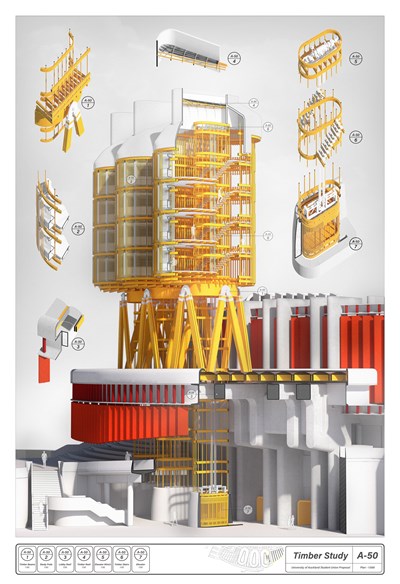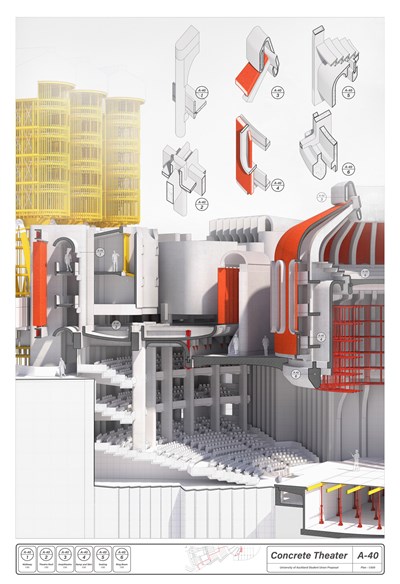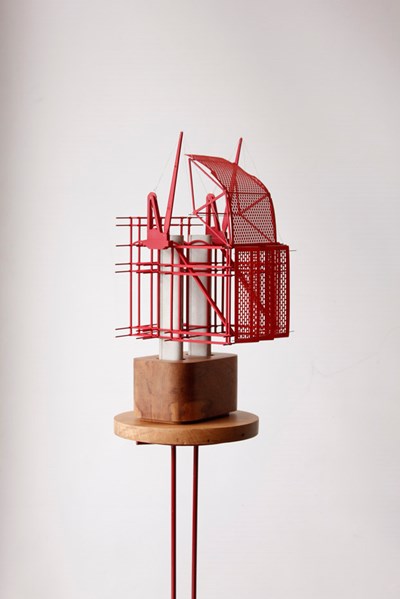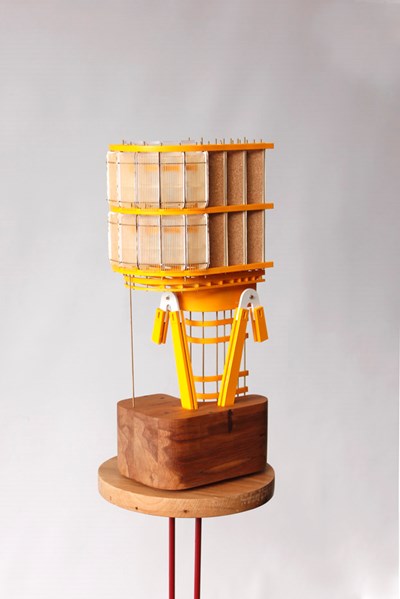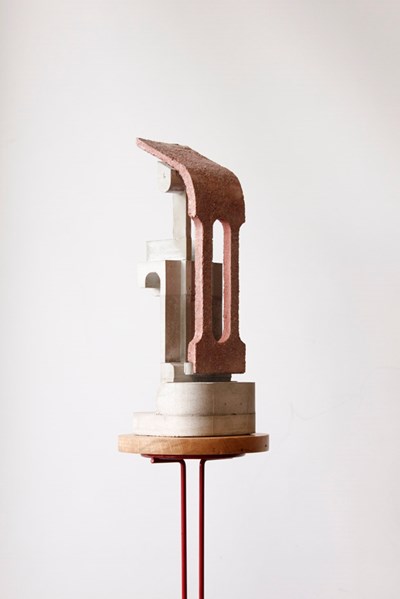Sam Moloney from Te Whare Wānanga o Tāmaki Makaurau (The University of Auckland) – School of Architecture and Planning was a finalist in the Te Kāhui Whaihanga Resene 2020 Student Design Awards for his project 'Construction as Language'.
Project description
If architects accept that physical architecture can carry meaning beyond its objective existence, we also must accept that the act of construction invests these intangible meanings into the built environment. If architecture is to suggest anything beyond its own reality, it must do so using its construction as a point of departure.
What is the role of the detail in construing meaning in the built environment? This thesis examines the architectural detail beyond its role to construct and investigates its ability to fuse abstract meanings with standard construction materials and practices. It attempts to rectify the schism between architecture as concept and architecture as building.
My research vehicle takes the form of a tectonic re-encoding of the Brutalist Student Union typology at the University of Auckland. A series of interventions in and around the SU building seek to develop a new space for students while also rediscovering and reinfusing the theoretical underpinnings of a Brutalist Student Union typology back into the campus. My reasons for doing so are simple – in a time of increasing isolation and disenchantment among students, there is a need for a sense of place and union among both students and staff at this university.
Steel, concrete, timber - this is how the Student Union objectively exits. To reflect, to challenge, to find one’s place and offer respite – this is subjectively how the Student Union is experienced. In this context, the detail is a language through which these subjective meanings manifest themselves in the built environment.
Judges' citation
Using the aging Student Union Building at the University of Auckland as the starting point for his project, Sam took a different approach to dealing with a heritage building, elevating it (both figuratively and literally) through a series of bold, expressive interventions. Utilising an architectural language that explored the 'detail' as a signifier of meaning through a series of drawings and models, Sam demonstrated an impressive understanding of materiality, details and form. Each was highly resolved and finessed, with clear consideration of both formal and structural relationships. Sam capably interpreted brutalist ideas and details into a cohesive series of buildings which sat neatly within the wider urban environment.




